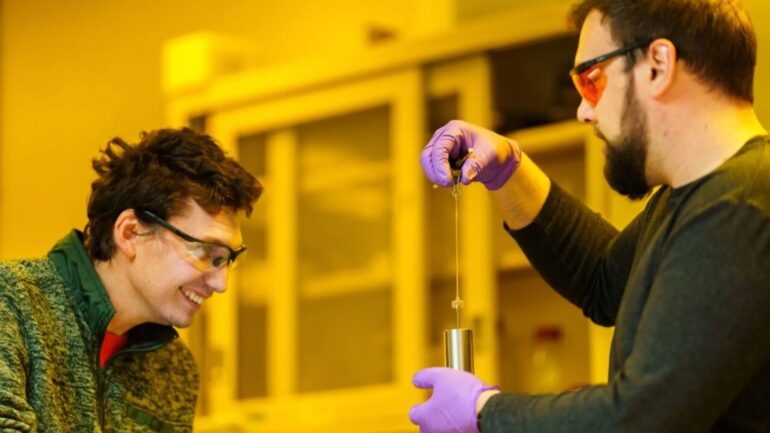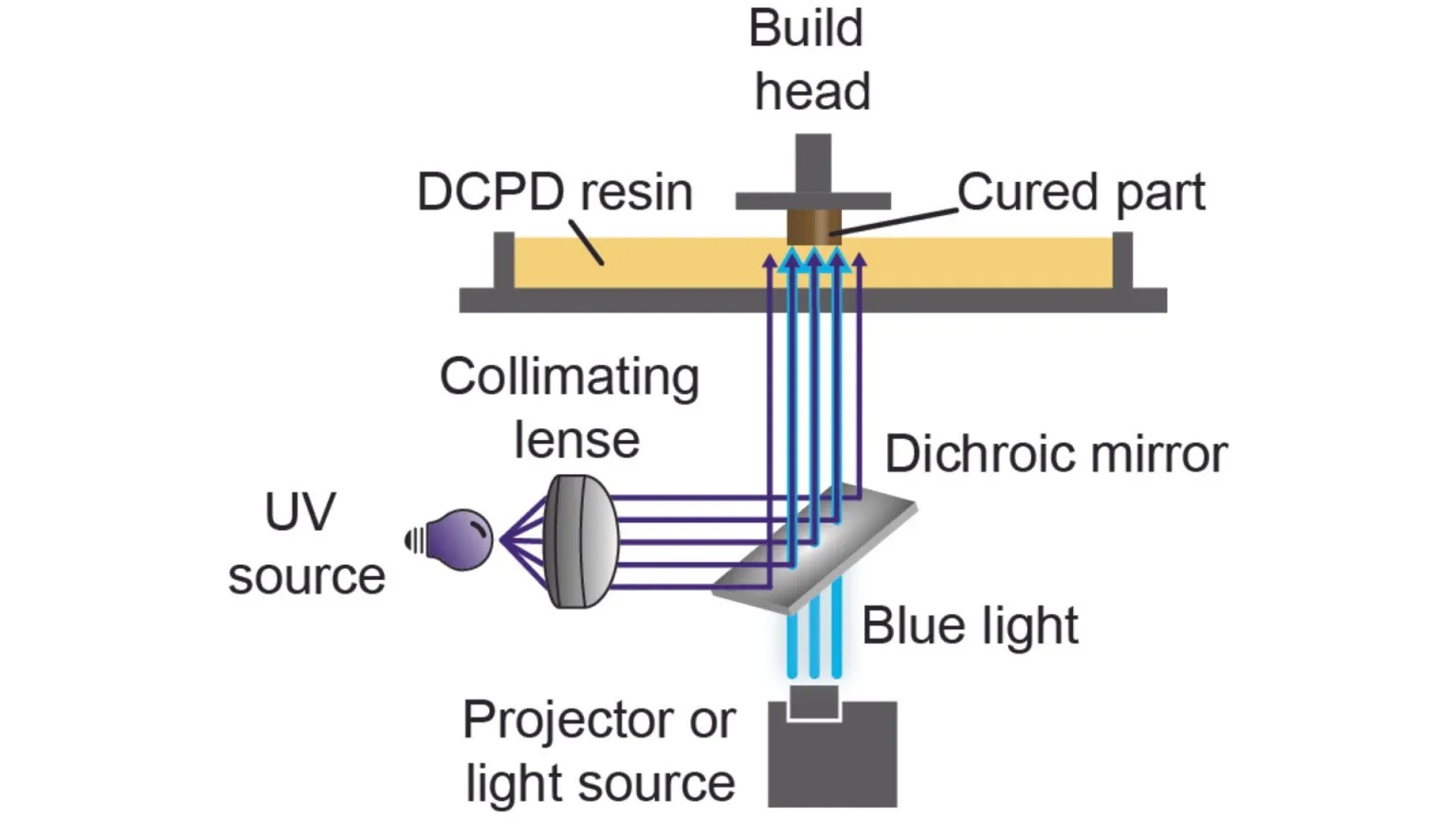The world of 3D printing has witnessed a significant advancement with the development of a new printing process by researchers at Sandia National Laboratories (SNL). This innovative technique, called SWOMP (Selective Dual-Wavelength Olefin Metathesis 3D-Printing), not only creates stronger non-metallic materials but also does so at a remarkable speed – five times faster than traditional 3D printing methods.
Innovative Cooling Technique Boosts 3D Printing Speeds
Traditional vat 3D printing involves curing a photosensitive liquid resin layer by layer, with each layer adhering to the one below it. This process is often slowed down by the need to carefully peel the cured polymer from the vat after each layer to avoid deformation.
The SNL team addressed this issue by leveraging a combination of two specific light sources: blue and ultraviolet light. “You are still printing layer by layer, but you are using a second wavelength of light to prevent polymerization at the bottom of the vat. So it doesn’t adhere to the bottom. That means you can lift the cured polymer part more quickly and speed up the printing process significantly,” explained Samuel Leguizamon, the project’s lead and a materials scientist at SNL.
Producing Stronger and More Versatile Materials
In addition to increasing printing speeds, the researchers also focused on improving the strength and versatility of 3D-printed materials. Most traditional vat-polymerized materials are acrylic-based, which can be challenging to use in harsh environments such as aerospace or automotive applications.
The team explored the use of dicyclopentadiene, a substance commonly used in paints, varnishes, and plastic flame retardants. By figuring out how to use light to polymerize it more quickly, they were able to create tougher, olefin-based materials. “We changed building blocks of the materials from acrylic-based to olefin-based. Which lets us print materials that are a lot tougher,” said Leguizamon.
Enabling On-Site 3D Printing in Remote Locations
The researchers envision SWOMP as a game-changer for 3D printing, enabling the production of stronger, more versatile materials in a fraction of the time. This could open up new possibilities for on-site 3D printing in remote locations, such as space missions or military bases, where access to machinery and parts is limited.
“We’re looking at locations where machinery and parts are not readily available; like in space, on the moon or in the Middle East at a US military base. You can bring with you some lightweight materials and make whatever you need on the spot,” said Bob Sleeper, licensing executive at SNL.
With SWOMP, the researchers aim to expand the horizons of 3D printing, allowing engineers, researchers, and designers to choose the most suitable materials for their specific needs while benefiting from faster and stronger production capabilities.


